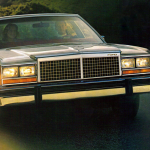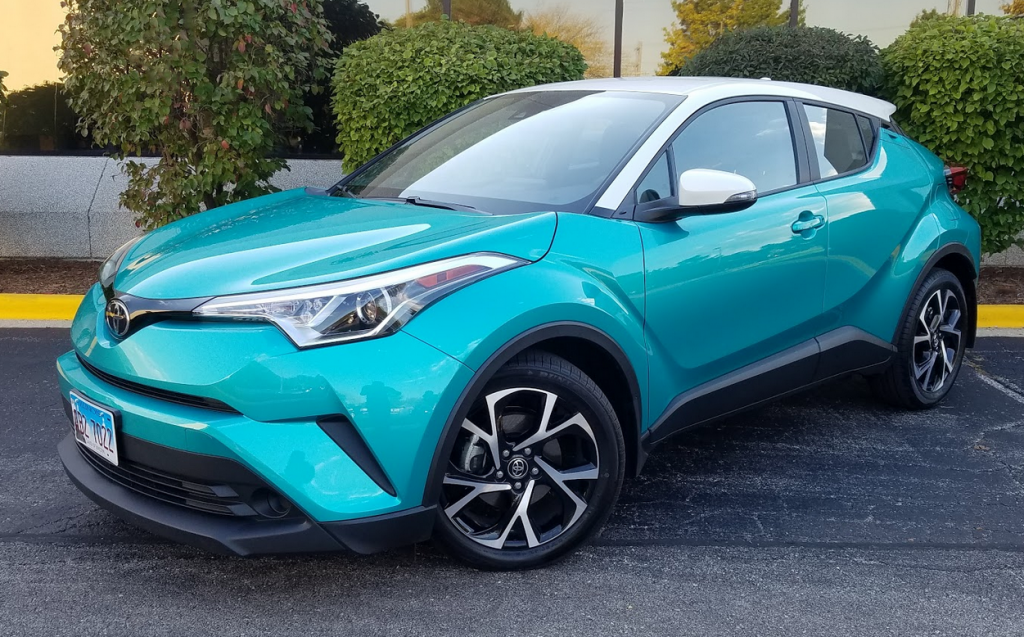
 2018 Toyota C-HR XLE
2018 Toyota C-HR XLE
Class: Subcompact Crossover
Miles driven: 534
Fuel used: 18.3 gallons
Real-world fuel economy: 29.2 mpg
Driving mix: 45% city, 55% highway
EPA-estimated fuel economy: 27/31/29 (city, highway, combined)
| CG Report Card | |
|---|---|
| Room and Comfort | C+ |
| Power and Performance | C |
| Fit and Finish | B |
| Fuel Economy | B+ |
| Value | A- |
| Report-card grades are derived from a consensus of test-driver evaluations. All grades are versus other vehicles in the same class. Value grade is for specific trim level evaluated, and may not reflect Consumer Guide's impressions of the entire model lineup. | |
| Big & Tall Comfort | |
| Big Guy | B- |
| Tall Guy | C+ |
| Big & Tall comfort ratings are for front seats only. "Big" rating based on male tester weighing approximately 350 pounds, "Tall" rating based on 6'6"-tall male tester. | |
Base price: $22,500 (not including $995 destination charge)
Options on test vehicle: “R-Code” white roof and mirror package ($500), carpeted floormats and cargo mat ($194), mudguards ($129)
Price as tested: $24,318
Quick Hits
The great: Excellent ride and handling balance, solid-feeling body structure
The good: One-of-a-kind styling inside and out
The not so good: Not as spacious inside as most class rivals, some key features (such as all-wheel drive and Apple CarPlay/Android Auto functionality) aren’t available… at least not yet
More C-HR price and availability information
John Biel
Remember Scion? Small vehicles; usually pretty simply equipped, but with personalization options; offbeat styling; and generally inexpensive. Those were the days, huh? Until 2016, that is.
So why in the name of niche marketing are we thinking about Scion at a moment like this? The Toyota C-HR, which makes its debut as a 2018 model, was supposed to be one before parent Toyota Motor Corporation folded up its “youth” brand. A few Scions, the newest and most viable of them, were salvaged to become Toyotas. The C-HR, which started out as the last Scion-badged auto-show concept vehicle before the make was terminated, has made that jump.
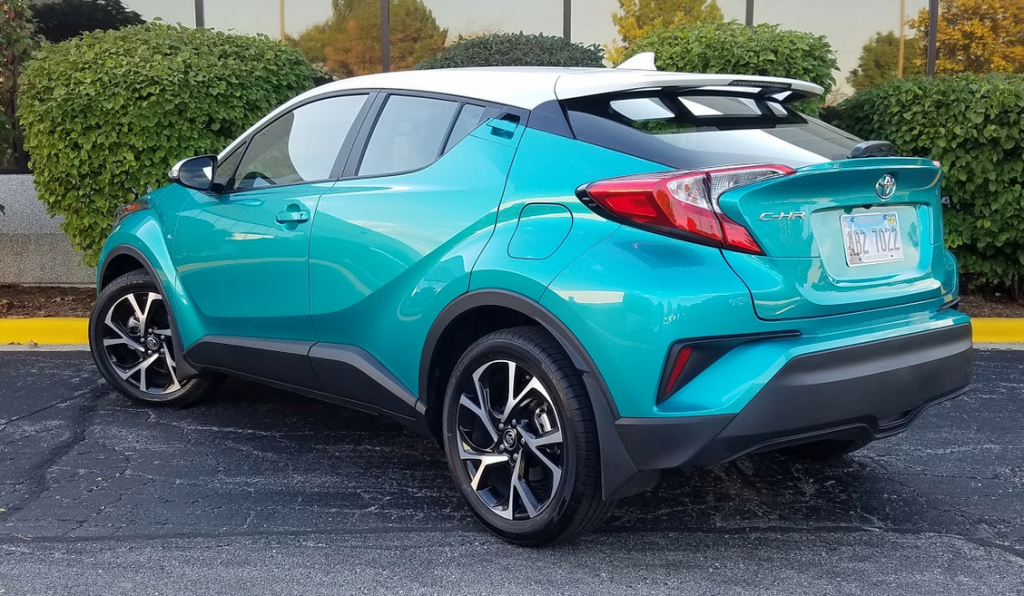
The C-HR’s Scion roots are showing. The subcompact kind-of-a-car/kind-of-a-crossover-SUV is small and simply equipped. Its looks are certainly offbeat. It’s pretty inexpensive, too—$22,500 to start, and $24,318 out the door as Consumer Guide®’s test car was equipped. The C-HR is fun to drive if nimble handling is your guide, but not as much of a smile-inducer if power is your thing.
CG sampled the C-HR XLE, the base model in the product line. Only an XLE Premium stands above it. XLE standard equipment includes 18-inch alloy wheels, dual-zone climate control, rearview camera, automatic headlamps, remote keyless entry (but not starting; you still need to turn a key), leather-trimmed tilt/telescoping steering wheel, AM/FM/HD radio, Aha Internet radio, and Bluetooth phone and music-streaming capability. To top things off, Toyota loads in its “Safety Sense P” suite of safety technologies: forward collision warning and mitigation with pedestrian detection, lane-departure warning and mitigation, automatic high beams, and adaptive cruise control.
First Spin: 2017 Nissan Rogue Sport
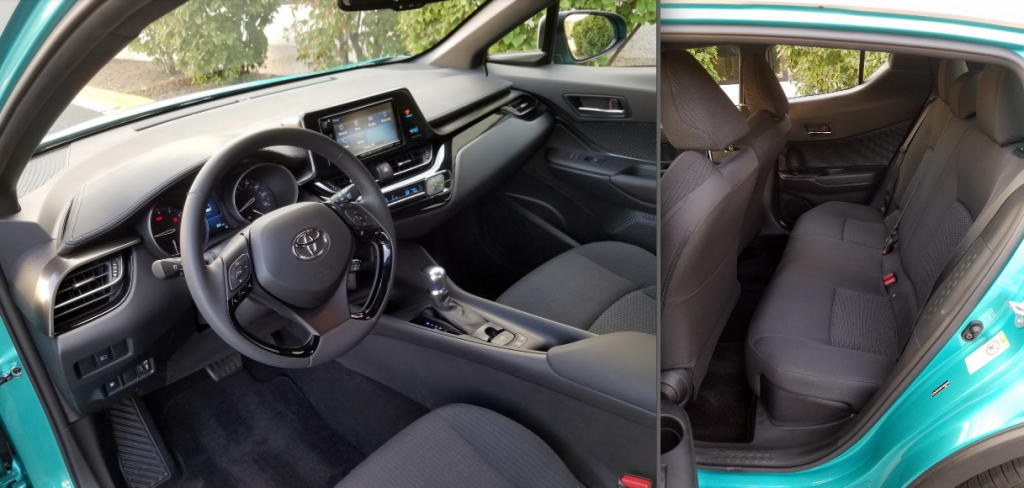
No matter which C-HR you buy, the powertrain is a 144-horsepower 2.0-liter 4-cylinder engine hooked to a continuously variable transmission that works like an automatic. Unfortunately, performance from this pairing is fairly tepid, especially from a standing start, and the engine is a little noisy under acceleration. Plus, it could be a bit stingier with gas for a small front-wheel-drive vehicle. (All-wheel drive is not available, which will diminish its SUV street cred in some snow-prone latitudes.) This tester averaged 26.7 mpg after a 178-mile stint, 70 percent of that under city driving conditions. That’s fractions shy of the 27-mpg city estimate the C-HR gets from the EPA, with highway and combined projections of 31 and 29 mpg, respectively.
However, getting around in a C-HR isn’t half bad. It handles well, with electric power-assisted steering that provides a modicum of welcome feedback. The car will hop a bit over serious road cracks, but it sweats the small stuff enough to keep the ride generally pleasant.
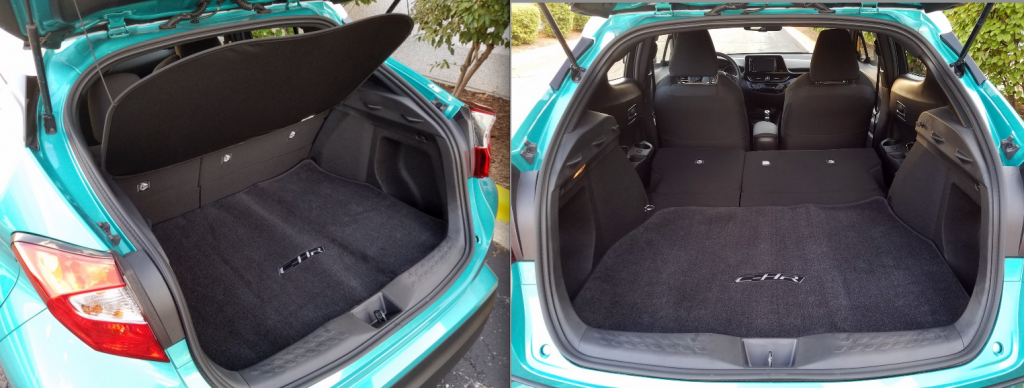
Entry and exit are OK, even with slightly raised ride height, but rear-corner vision is severely hampered where a style-dictated body rise and the sloping roof meet in the rear door and quarter panel. From the perspective of rear-seat passengers, it’s either very “private” or kind of claustrophobic back there. Note that the rear exterior door handles reside high up, just below where the roof passes over. Average-sized adults will find good legroom in both rows, but rear legroom might be compromised if tall front passengers need to track back in their seats. Toyota reports that rear headroom is 0.2 of an inch greater in back than in front, but the roof sure seemed closer to this reviewer’s noggin when he slid into the back seat.
Test Drive: 2018 Mazda CX-3 Grand Touring
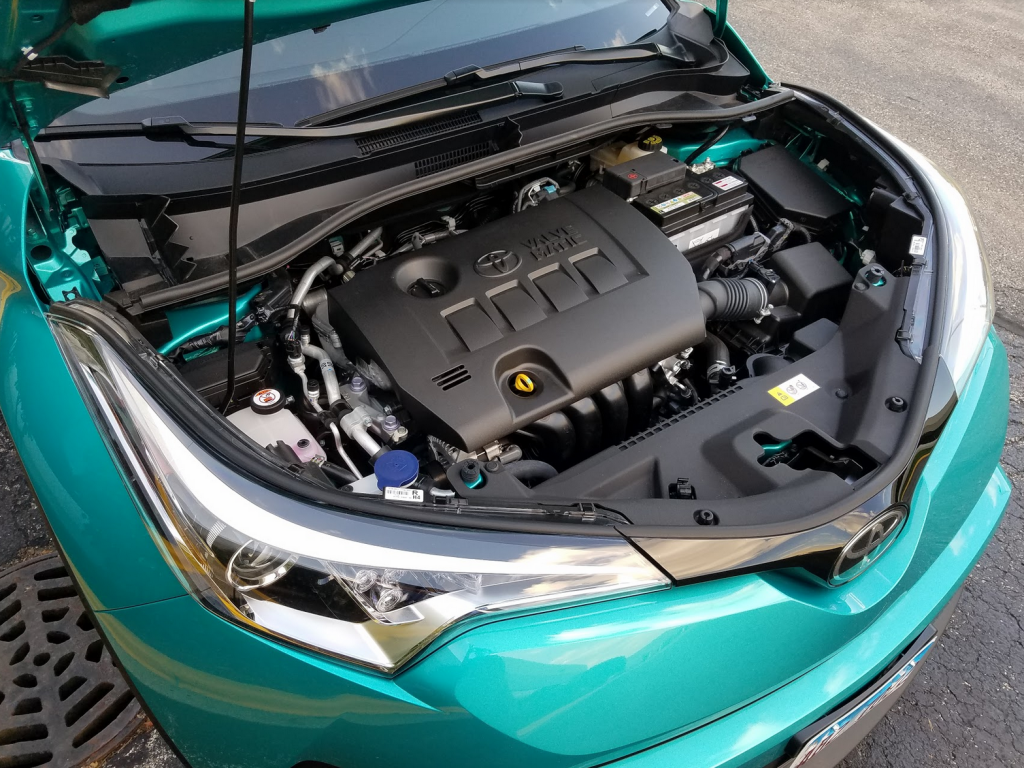
The cargo area loads flat at bumper height. Space isn’t too bad for a tiny vehicle, but it’s not class leading. The rear seats, which are split 60/40, fold flat to form an uninterrupted extension of the cargo floor for much better load space. Small cubbies are found at the rear corners of the cargo area, and under the floor there’s some small-item space in the foam organizer fitted around the spare tire.
Interior storage options are fairly limited. The glove box sits very low in the dash; small, slit-like front door pockets include bottle holders; and the console contains a small covered box and two open cup holders. Back-seat storage is just a cup holder in each door armrest—nothing else.
Appointments and controls walk a fine line between sensory appeal and cost containment. Seat cloth has a subtle fleck pattern in it, so it looks nice, but the material feels a bit “industrial.” Pliable surfaces are found on much of the dash, as well as on the door tops and armrests in front, but rear-seat door panels and armrests are hard plastic. The radio offers straightforward tuning and setting on a 7-inch touchscreen, though a repetitive-push button handles station tuning that could be done quicker with a rotating knob. Separate climate controls use a mix of repetitive-push toggle switches (for temperature, fan-speed, and mode) and two 4-button pads (for other functions). Driving dials are big with a colorful, legible info display between them. However, the rearview camera shows up in the confined space of the rearview mirror, not on the touchscreen, where the view could be much bigger.
Personalization, one of the erstwhile Scion’s lures for the youth market, isn’t as evident with the Toyota C-HR. Aside from accessory mudguards and carpeted mats, CG’s test car had the only available factory option—a white roof panel and exterior-mirror shells. (The test car’s Radiant Green paint was one of just three colors eligible for the “R-Code” contrast-paint treatment.) While the XLE Premium adds a few more comforts and conveniences, items like a sunroof, navigation, and Apple CarPlay/Android Auto smartphone integration aren’t available at all. Little as it is, the C-HR still has room to grow.
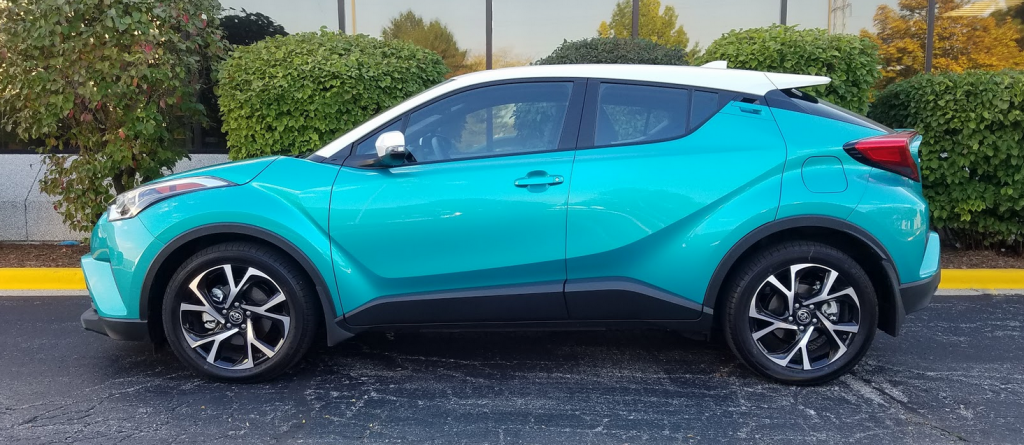
Quick Spin: 2017 Chevrolet Trax Premier



